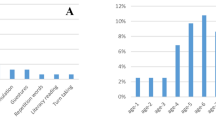Abstract
In this paper, it proposes the development of a virtual reality system that works simultaneously with the physical environment, by creating an atmosphere that stimulates the abilities of children with autism spectrum disorder. This system is implemented through a human - machine interface, which has the possibility to simulate and work with functions focused on rehabilitation, so the patient will be involved in assisted therapies based on DSM - 5 protocols. Therefore, multiple environments and applications are presented for the interaction with the physical media to increase the stimulus of the affected one. The results of the application are presented to validate the project using the information collected through the interaction between the developer, therapist and patient.
Access this chapter
Tax calculation will be finalised at checkout
Purchases are for personal use only
Similar content being viewed by others
References
Yun, S.-S., Kim, H., Choi, J., Park, S.-K.: A robot-assisted behavioral intervention system for children with autism spectrum disorders. Rob. Auton. Syst. 76, 58–67 (2016)
Robinson, P.: A Review of Autism Spectrum Disorder, March 2012
Ennis-Cole, D.L.: Technology for Learners with Autism Spectrum Disorders. Springer, Berlin (2014)
Pauta-Pintado, J., Lima-Juma, D., Gal, J.: An intelligent system based on ontologies and ICT tools to support the diagnosis and intervention of children with autism, p. 5 (2016)
Dekkers, L.M.S., Groot, N.A., Delfos, M.F.: Prevalence of autism spectrum disorders in ecuador: a pilot study in quito. J. Autism Dev. Disord. 45(12), 4165–4173 (2015)
Tentori, M., Escobedo, L., Balderas, G.: A smart environment for children with autism. IEEE Pervasive Comput. 14(2), 42–50 (2015)
Sula, A.: Using Assistive Technologies in Autism Care Centers to Support Children Develop Communication and Language Skills. A Case Study: Albania, vol. 3, no. 1, pp. 203–212 (2014)
Mazurek, M.O., Shattuck, P.T., Wagner, M., Cooper, B.P.: Prevalence and correlates of screen-based media use among youths with autism spectrum disorders. J. Autism Dev. Disord. 42(8), 1757–1767 (2012)
Rothbaum, B.O., Hodges, L.F., Kooper, R., Opdyke, D., Williford, J.S., North, N.: Effectiveness of computer generated (virtual reality) graded exposure in the treatment of acrophobia. Am. J. Psychiatry 152(4), 626–628 (1995)
Kandalaft, M.R., Didehbani, N., Krawczyk, D.C., Allen, T.T., Chapman, S.B.: Virtual reality social cognition training for young adults with high-functioning autism. J. Autism Dev. Disord. 43(1), 34–44 (2013)
Wang, M., Reid, D.: Virtual reality in pediatric neurorehabilitation: attention deficit hyperactivity disorder, autism and cerebral palsy. Neuroepidemiology 36(1), 2–18 (2011)
Marcus, L., Mesibov, G., Hogan, K.: Brief report: two case studies using virtual reality as a learning tool for autistic children. J. Autism Dev. Disord. 26, 9 (1996)
Strickland, D.: Virtual reality for the treatment of autism. Stud. Health Technol. Inform. 44, 81–86 (1997)
Lahiri, U., Bekele, E., Dohrmann, E., Warren, Z., Sarkar, N.: A physiologically informed virtual reality based social communication system for individuals with autism. J. Autism Dev. Disord. 45(4), 919–931 (2015)
Author information
Authors and Affiliations
Corresponding author
Editor information
Editors and Affiliations
Rights and permissions
Copyright information
© 2017 Springer International Publishing AG
About this paper
Cite this paper
Carvajal, C.P., Proaño, L., Pérez, J.A., Pérez, S., Ortiz, J.S., Andaluz, V.H. (2017). Robotic Applications in Virtual Environments for Children with Autism. In: De Paolis, L., Bourdot, P., Mongelli, A. (eds) Augmented Reality, Virtual Reality, and Computer Graphics. AVR 2017. Lecture Notes in Computer Science(), vol 10325. Springer, Cham. https://doi.org/10.1007/978-3-319-60928-7_15
Download citation
DOI: https://doi.org/10.1007/978-3-319-60928-7_15
Published:
Publisher Name: Springer, Cham
Print ISBN: 978-3-319-60927-0
Online ISBN: 978-3-319-60928-7
eBook Packages: Computer ScienceComputer Science (R0)




